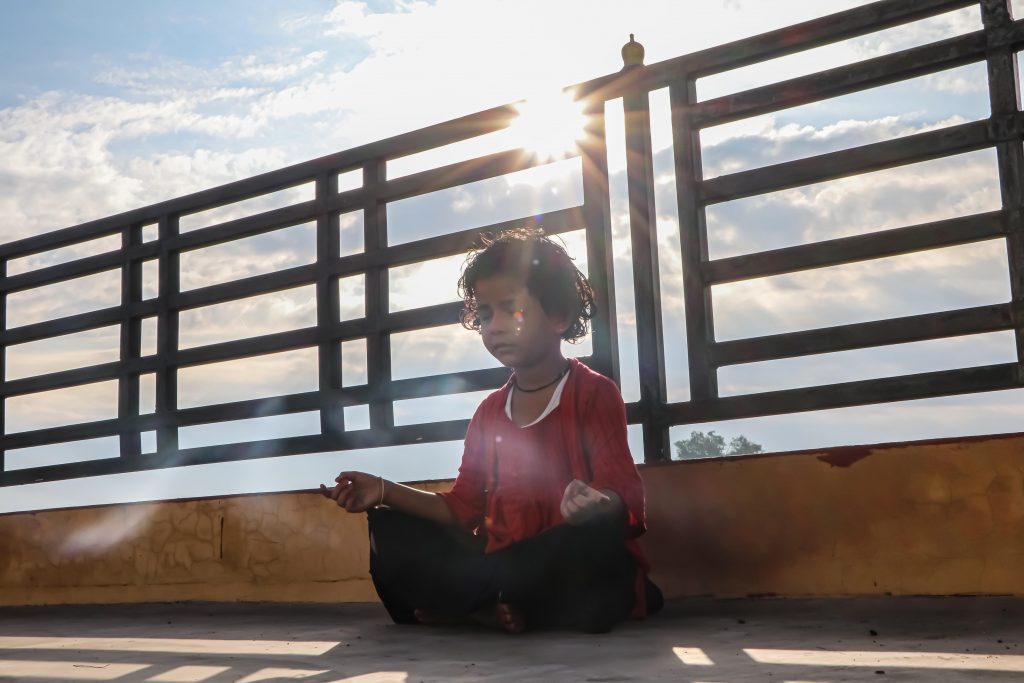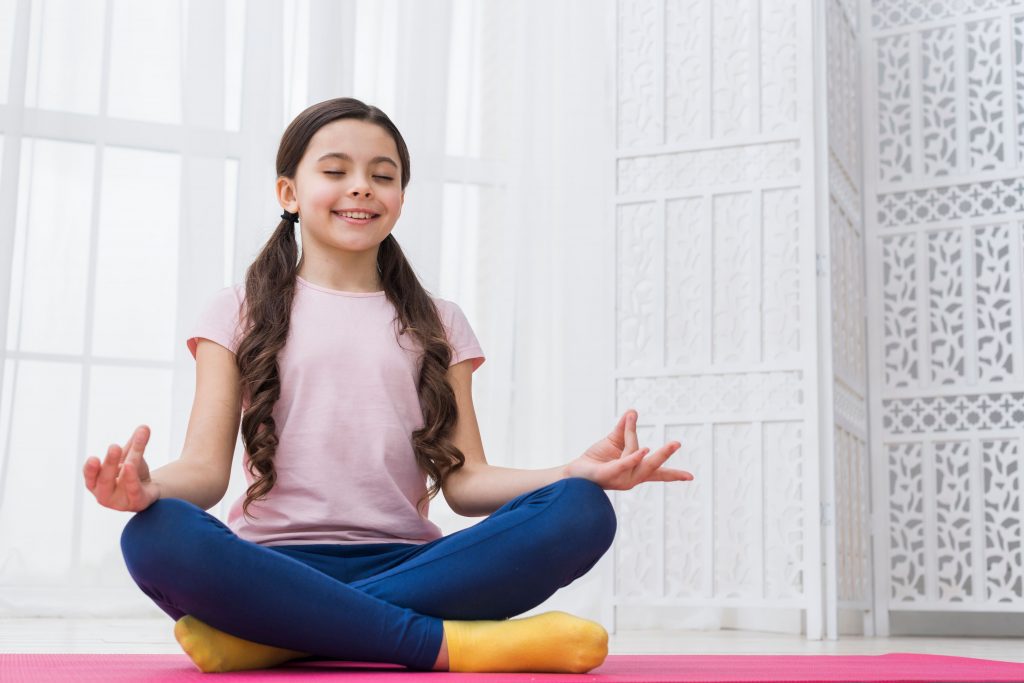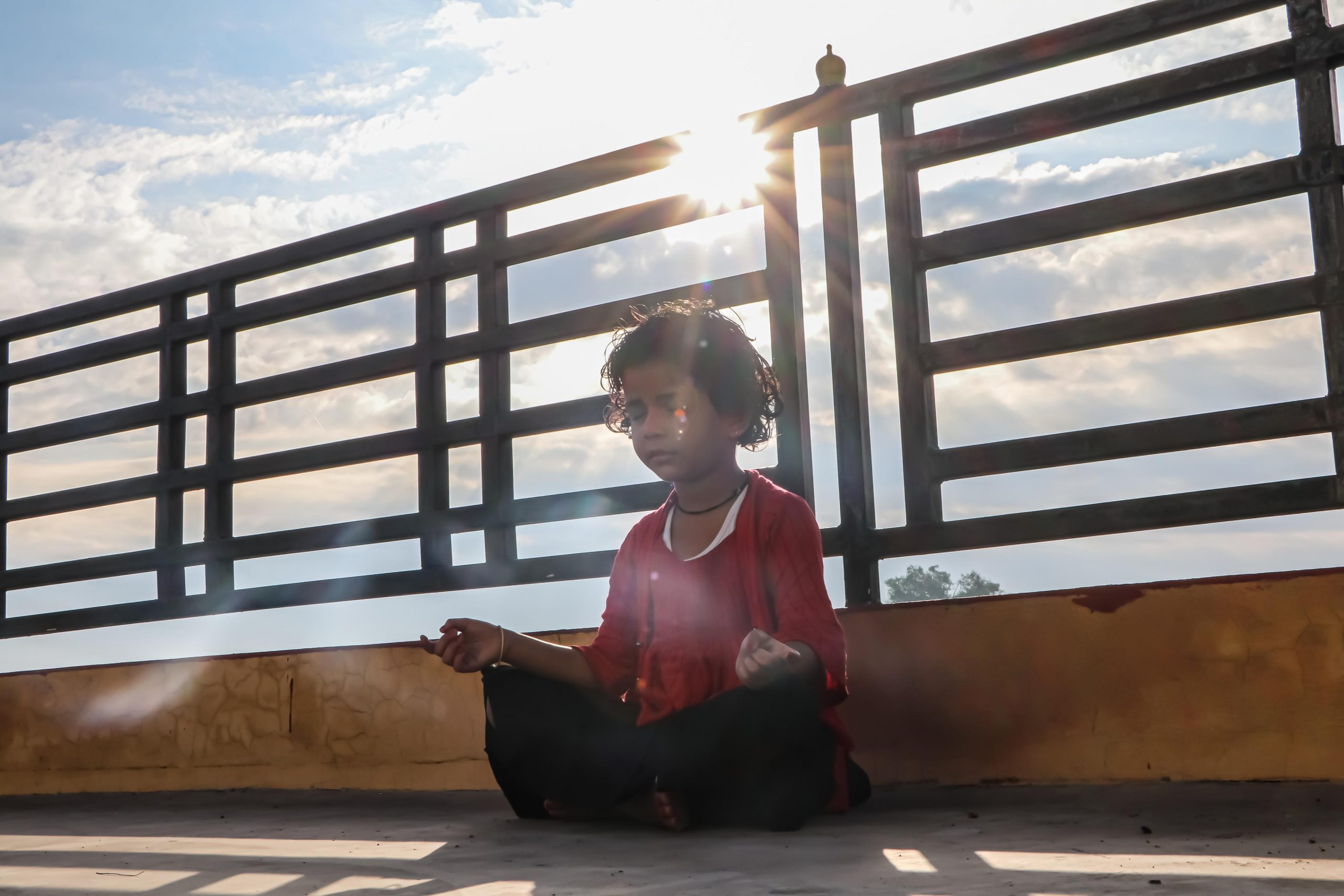Did you know that yoga asanas can play a crucial role in children’s physical and mental health? Considering how useful it is for their overall well-being, inculcating the habit of yoga in kids by doing it with them is an excellent idea. That’s why we’ve listed out these easy yoga asanas for kids, so you can teach your little one the practice of yoga and mindfulness.

Mindfulness is one of the benefits of yoga asanas for kids.
Benefits Of Yoga Asanas For Kids
Yoga asanas for kids are beneficial in many ways; they’re easy enough for you to attempt with your child while proving helpful and beneficial to you both. Doing yoga can help your child to cope with stressful situations in a better way and maintain a balance in their lives. Furthermore, it helps them strengthen their interpersonal relationships and teaches the habit of mindfulness, which can be helpful in adulthood.
Six regular months of asanas and pranayama (breathing exercises) are known to reduce body weight, improve memory and endocrine functions!
Now that we know so much about the benefits of yoga postures, let’s dive into some easy, safe, and effective yoga asanas for kids.
Yoga Asana #1: Setu Bandha Sarvangasana (The Bridge Pose)
Ask your tiny tot to:
- Lie down on their back.
- Bend the knees and place their feet flat on the ground, keeping them hip-width apart.
- Ensure that their knees & ankles are exactly in a straight line.
- Place their arms in a good resting position beside the body, with their palms facing downwards.
- Take a long inhalation and raise the lower, middle, and upper back off the floor.
- Balance the body in a way that the shoulders, arms, and feet can support the body weight.
- Keep the hips tight and stiff.
- Interlace the fingers, and push the hands towards the ground so that they lift the torso higher.
- Hold this particular posture for as much time as possible whilst breathing slowly in the pose.
- Exhale and eventually, release.
Benefits Of This Yoga Asana: It lengthens and opens the shoulders, hips, thighs, and chest while strengthening the spine and hamstrings. It also boosts the flexibility of the spine.
Warning: If your little one faces any struggle trying to get their pelvis lifted above the ground, slip a firm bolster under their sacrum to make them rest their pelvis.
Yoga Asana #2: Bhujangasana (Cobra Pose)
The stretch promotes a strong back, sturdy abs and gives strength.
Ask your kid to:
- Lie with their face down, tips of their feet flat on the floor and palms on either side of the body.
- Pull the shoulders a little back towards the spine.
- Focus on the abdomen during this asana because it keeps the lower back protected.
- Lift the body into a cobra pose whilst keeping the chin up. Ask them to use their hands for support, but don’t put additional stress on them.
- Hold in this posture for 15-30 seconds before smoothly releasing the body to the floor.
Benefits Of This Yoga Asana: Strengthens the spine, and stretches the chest, shoulders, abdomen, and buttocks. It also stimulates the abdominal organs and releases fatigue and stress. Practice this yoga asana for kids with breathing problems like asthma, since it might prove beneficial.
Warning: Ask your kid to arch the back as much as the body can take. Every child has different flexibility levels, so let them take it slow.
Yoga Asana #3: Tadasana (The Mountain Pose)
The Mountain pose is the pivotal pose for every standing asana and could be a calming yoga posture for kids.
Ask your kid to:
- Stand upright and tall.
- Spread the legs a few inches apart and spread the toes out.
- Keep their arms beside the body.
- The shoulders should be relaxed and not tense.
- Lift the arms above the head.
- Retain the posture and inhale and exhale slowly.
- Retain as long as it’s easy.
Benefits Of This Yoga Asana: Enhances posture, strengthens the thighs, legs, and ankles, firms the stomach and hips, and improves sleep.
Warning: No cautions.
Yoga Asana #4: Simhasana (The Lion Pose)
While roaring and enjoying with your little one, this asana is beneficial in de-stressing them.
Ask your kid to:
- Sit with their hips placed on the heels.
- Rest the palms on the knees.
- Inhale from the nose, and while you’re on it, stick your tongue out.
- Keep the eyes wide open, exhale through the mouth, and make a sound of a roaring lion (Haaa).
Benefits Of This Yoga Asana: It is an excellent stretching exercise for the throat, lungs, and respiratory tract. It improves the functioning of the tonsils and the immune system, and reduces stress and anxiety. In addition, it also works on aggression. Thus, it is suitable for a hyperactive child.
Warning: Do not repeat this more than five times.

The earlier you start with yoga asanas for kids, the more they realize its value as they grow.
Conclusion
An everyday routine of yoga asanas for kids will give your child a more focused and disciplined lifestyle, and give them the strength to deal with stressful situations. You can initiate with one or two yoga poses initially, and eventually, you can have them try more as they get used to the practice.
Does your child love to do yoga asanas? Which one, do you think, is the best pose for them or which one is their favourite? Let us know about it in the comments section below. Make sure you pair yoga with the right nutrition for holistic development – the ImmunifyMe app can help you out with that!
FAQs On Yoga Asanas For Kids To Try At Home
Is Yoga Good For 4-Year-Olds?
Yes, yoga is good for 4-year-olds. It helps them improve their breathing, posture, flexibility and coordination, all from a young age.
How Do You Explain What Is Yoga To Kids?
An easy way to explain what yoga is to kids is to tell them it’s an old science that helps us to feel better. Explain to them that we feel better by exercising our minds, bodies and breathing, all at the same time.
How Do Kids Do Yoga For Beginners?
When introducing your kids to yoga, ensure you first explain what it is to them. Start them off with easy yoga asanas and poses so that they don’t find the moves too difficult. Ease them into it, slowly introducing more poses as they get better at it.
What Yoga Can Kids Do?
Yoga asanas for kids are postures and poses that are simple, yet have the benefits of yoga attached to them. These asanas can be attempted by children since they’re comparatively much easier.
Reference: (1)






